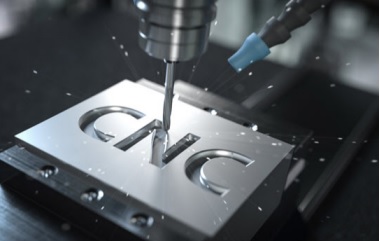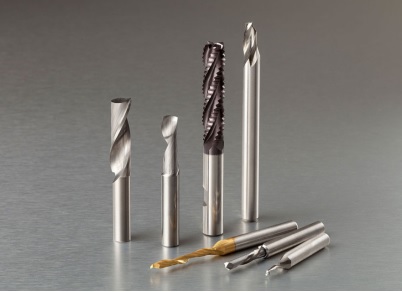How to Reduce Tool Radial Runout in CNC Milling?
In the CNC milling process, there are many reasons for the machining error, and the error caused by the radial runout of the tool is one of the important factors. In actual CNC milling, the radial runout of the tool affects the machining accuracy, surface roughness, tool wear unevenness and cutting process characteristics of the multi-tooth tool. The greater the radial runout of the tool, the more unstable the processing state of the tool and the more it affects the processing effect.

What is Radial Runout?
Radial runout refers to the maximum variation of the distance between each point on the actual surface of the measured rotating surface in the same cross-section to the reference axis. Radial runout is a comprehensive error. In addition to the tilt, bending, and axis translation that cause the Coaxial error, it also includes the roundness error in the shape error of the same cross-section, etc.
Causes of Radial Runout in CNC Milling
The manufacturing errors and clamping errors of the tool and spindle components cause drift and eccentricity between the tool axis and the ideal rotation axis of the spindle, as well as the specific processing technology and tooling, etc., may cause the radial runout of the CNC milling machine tool during processing.
1. The effect of the spindle's radial runout
The main reasons for the radial runout error of the main shaft are the coaxiality errors of the main shaft journals, the various errors of the bearings themselves, the coaxiality errors between the bearings, the main shaft deflection, etc., which affect the radial rotation accuracy of the main shaft. It varies with the processing method. These factors are formed during the manufacturing and assembly of the machine tool, and it is difficult for the operator of the machine tool to avoid their influence.
2. The impact of the inconsistency between the tool center and the spindle rotation center
During the installation of the tool to the spindle, if the center of the tool and the rotation center of the spindle are inconsistent, it will inevitably bring about the radial runout of the tool. The specific influencing factors are: the cooperation between the tool and the chuck, whether the method of loading the tool is correct, and the quality of the tool itself.

3. The impact of specific processing technology
The radial runout of the tool during machining is mainly because the radial cutting force exacerbates the radial runout. Radial cutting force is the radial component of the total cutting force. It will make the workpiece bend and deform and produce vibration during processing, which is the main component that affects the processing quality of the workpiece. It is mainly affected by factors such as cutting amount, tool and workpiece material, tool geometry angle, lubrication method and processing method.
Tips to Reduce Radial Runout in CNC Milling
The radial runout of the tool during CNC miling is mainly because the radial cutting force exacerbates the radial runout. Therefore, reducing radial cutting force is an important principle to reduce radial runout. The following methods can be used to reduce radial runout:
1. Use sharp tools
Choose a larger tool rake angle to make the tool sharper to reduce cutting force and vibration. Choose a larger tool clearance angle to reduce the friction between the main recovery surface of the tool and the elastic recovery layer of the transition surface of the workpiece, thereby reducing vibration. However, the front angle and back angle of the tool cannot be selected too large, otherwise it will result in insufficient strength and heat dissipation area of the tool. Therefore, to choose different tool rake angle and back angle according to the specific situation, it can be smaller during roughing, but in the finishing process, in order to reduce the radial runout of the tool, it should be larger to make the tool Sharper.
2. Use strong tools
There are two main ways to increase the strength of the tool. First, the diameter of the arbor can be increased. Under the same radial cutting force, the diameter of the arbor increases by 20%, and the radial runout of the tool can be reduced by 50%. The second is to reduce the extended length of the tool. The larger the extended length of the tool, the greater the deformation of the tool during processing. During the continuous change during processing, the radial runout of the tool will continue to change, resulting in the workpiece The machining surface is not smooth. Similarly, the tool extension length is reduced by 20%, and the radial runout of the tool is also reduced by 50%.
3. The rake face of the tool should be smooth
During machining, the smooth rake face can reduce the friction of chips against the tool, and can also reduce the cutting force received by the tool, thereby reducing the radial runout of the tool.
4. Spindle taper hole and chuck cleaning
The spindle taper hole and the chuck are clean, and there must be no dust and debris generated when the workpiece is processed. When choosing a processing tool, try to use a tool with a short outstretched length to apply the tool. The force should be reasonable and even, not too large or too small.
5. The amount of knife to eat should be reasonable
If the amount of knife eating is too small, there will be a phenomenon of machining slippage, resulting in the continuous change of the radial runout of the tool during processing, so that the processed surface is not smooth. When the amount of knife eating is too large, the cutting force will increase, thus As a result, the tool deforms greatly, increasing the radial runout of the tool during machining, and also making the machined surface not smooth.

6. Use reverse milling during finishing
As the position of the gap between the screw and the nut changes during milling, it will cause uneven feed of the workbench, which will cause shock and vibration, which will affect the life of the machine tool, tool and the surface roughness of the workpiece. During up-cutting, the cutting thickness changes from small to large, and the load of the tool also changes from small to large, making the tool more stable during machining. Note that this is only used for finishing, but also when using rough milling, this is because the productivity of down milling is high, and the tool life can be guaranteed.
7. Reasonable use of cutting fluid
Reasonable use of cutting fluid with cooling effect as the main solution has little effect on cutting force. Cutting oil with a lubricating effect can significantly reduce the cutting force. Due to its lubricating effect, the friction between the cutting edge of the tool and the chip and between the cutting edge and the transition surface of the workpiece can be reduced, thereby reducing the radial runout of the tool.
Practice has proved that as long as the accuracy of the manufacturing and assembly of various parts of the machine tool is ensured, reasonable processes and tooling are selected, the impact of the radial runout of the tool on the machining accuracy of the workpiece can be minimized.


